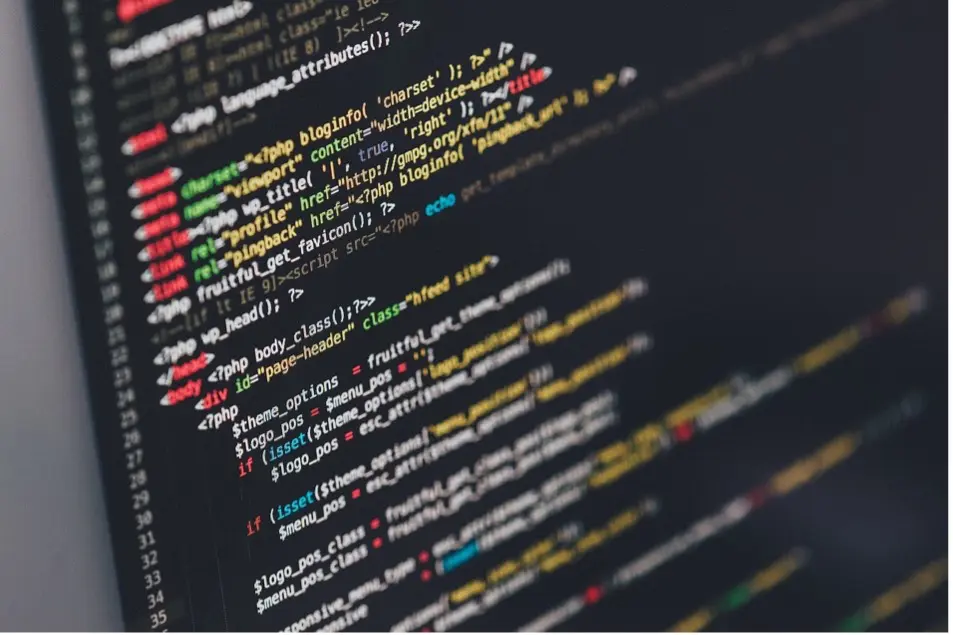“Opt for a consolidated view of your various types of IP rights.”
Intellectual Property (IP) represents a significant asset for many companies, encompassing a wide range of rights related to patents, designs, trademarks, trade secrets, software, domain names, and even plant breeder’s rights. However, these rights can pose strategic challenges, for which not all companies are adequately equipped. The purpose of this article, written by PI Motion, is to provide some insight into the following issue: what strategy should be adopted for effective management of intellectual property rights?
There is often a fragmentation in the management of IP rights, with each type of right being handled by different departments and different stakeholders (for example: different intellectual property attorneys or IP firms). This fragmentation can lead to a lack of visibility, coherence, and insufficient coordination, which in turn can hinder the optimal management, exploitation, and/or valorization of IP assets. That’s why it is imperative to adopt a global and systemic perspective of all IP rights.
In this article, we will explore the crucial importance of managing Intellectual Property rights globally to strengthen a market position. The first part will be devoted to explaining the different types of IP rights. The second part will illustrate portfolio management through a concrete example. This study aims to highlight how centralizing IP management not only optimizes resources but also simplifies the overall administration of your IP portfolio, enabling effective management of budgets and deadlines.
I. Management of IP Rights: Composition of a Portfolio
1. Protecting a patent
The patent law is multifaceted and depends on the technical fields and objects protected by patents, thus integrating into an interdisciplinary context where law converges with other areas of knowledge, such as science and technology.
A patent is a title granted by the competent public authorities of a given state or region. It grants its holder a temporary and geographical monopoly for the exploitation of the invention to which it refers, whether it be a product, process, or method.
Patents have a lifespan of 20 years from the filing date, subject to the payment of maintenance fees to the relevant patent offices. This 20-year duration allows the inventor of the invention to benefit from a period of exclusivity to exploit and commercialize their innovation. Beyond this duration or in case of non-payment of maintenance fees, the invention falls into the public domain.
2. Designs and Models: How to Protect Them
The law of designs and models concerns the appearance of products, primarily engaging the senses of sight and touch. It distinguishes two categories: designs, which relate to elements in two dimensions, and models, which relate to elements in three dimensions.
Among industrial property rights, designs and models are used to protect a specific appearance, whether it be a product, a design element, or a digital object in a software or mobile application user interface. They thus offer a broad scope of action, often complementary to invention patents, allowing their holder to exercise exclusive control over the exploitation of the object through legal tools somewhat different from those available for exercising rights associated with patents.
An essential point to remember is that a design and model can be renewed every five years, by payment of a maintenance fee, for a maximum duration of 25 years. This is a longer period established by the legislator compared to other IP rights, notably because certain elements protected by design and model law correspond to an iconic design allowing differentiation of a product among other competing products. This period ensures the durable protection of a product’s aesthetics and design, offering the innovator long-term protection in a given territory and classification.
3. Industrial Property of Trademarks
In addition to patents, industrial property also encompasses the protection of distinctive signs, which include trademarks.
A trademark is a perceptible sign affixed to a product or accompanying a product or service, intended to distinguish it from similar products of competitors or services provided by others. There are different types of trademarks, including sound marks, such as advertising jingles, visual marks, such as logos and emblems, verbal marks, comprising specific words or expressions, such as punchlines, doctrines, or slogans.
The duration of the trademark right is in periods of 10 years from the date of the registration application. This protection period can be indefinitely renewed every 10 years by paying renewal fees to the competent offices. Thus, unlike other intellectual property rights, it is the only right that can be renewed indefinitely. However, the protection is limited to the territory in which the application was made and limited within the chosen classifications.
It is essential to emphasize the interest in being able to maintain a trademark for 50 years or even 100 years in certain situations. Companies can endure very long periods, so it is essential and beneficial to protect their brand image over decades. This is particularly relevant for luxury houses, which seek to preserve and strengthen their prestige image over time.
4. Know-how: Intangible Elements in IP Management
Know-how is undisclosed knowledge that gives a competitive advantage to a company. According to jurisprudence, which refers to court decisions, it encompasses secret, substantial, and formalized knowledge. It can take the form of manufacturing processes, production techniques, chemical formulas, or other confidential information not generally known to the public.
Know-how, consisting of technical knowledge and unpatented manufacturing methods acquired over the years, does not grant exclusive rights. Its best protection lies in confidentiality and the signing of non-disclosure agreements with employees, suppliers, and partners.
However, know-how can be included in a licensing agreement, but the elements of know-how transferred must be precisely documented. It is therefore important to document and formalize know-how in contracts, company manuals, or other internal documents. This can help protect know-how by establishing evidence of its creation and use within the company.
5. Software: Protection by Copyright or Patent Rights
Software refers to computer programs, sets of source code, or object code designed to perform specific tasks on computers or other electronic devices. It is important to emphasize at this stage that documentation associated with software is essential for its valorization. They are designed to improve process efficiency, automate functions, or provide specific services, thus distinguishing the company’s products or services from similar offerings by competitors or external providers. Software has a wide range of concrete applications, including in the medical field, individual assistance, as well as in many mobile applications.
There are different types of software, ranging from consumer applications to complex enterprise solutions. These software programs can be protected by copyright, and in some cases, by patents, although this possibility depends on many elements and remains limited.
Copyright, which is commonly used to protect source code, is valid for the life of the author plus 70 years after they died in France, a duration that may vary depending on the country in which it was granted. In contrast, the protection duration of software patents may vary, but it is generally limited to 20 years from the date of the application.
Additionally, it is important to note that for software, there is the option to deposit a copy of it with a trusted third party, which, in the case of software, corresponds to the Agency for the Protection of Programs (APP). This procedure offers additional protection by creating formal evidence of the existence of the software on a given date, which can be useful in case of disputes over intellectual property or to establish copyright.

6. Domain Names: Protecting Your Company Online
A domain name is a unique web address used to identify a website. Choosing a domain name allows visitors to identify your website and access its content. It’s a strategic decision that can strengthen your business communication, attract customers, and enhance your online reputation.
The reservation period for a domain name varies, but generally, domain names must be renewed periodically, typically every one to ten years, depending on the extension. This ensures that the company retains ownership of the domain name and can continue to use it to maintain its online identity.
Additionally, registrars are organizations that offer domain name holders the opportunity to register and renew them for a fee.
7. Plant Breeders’ Rights
Plant Variety Certificates (PVC) are a form of intellectual property rights specifically designed to protect new and distinct plant varieties resulting from a selection or breeding process. They are intended to distinguish these varieties from others existing in the market. PVCs are essential for companies operating in the agriculture, horticulture, and seed production sectors as they ensure the protection of investments in research and development.
The duration of a PVC is typically 25 to 30 years, depending on the applicable national or international legislation. PVC holders have the exclusive right to produce, sell, and commercialize the protected plant variety, giving them a competitive advantage in the market.

II. Management of Intellectual Property Rights: A Concrete Example
Case Study: A Company Striving to Protect Its IP Rights
Let’s consider the example of a company where an employee has created an innovative vacuum cleaner. This innovation is based on advanced mechanical technology that significantly improves suction efficiency, thereby reducing the need for frequent filter cleaning and optimizing dust and dirt collection. The company has decided to file a patent application for this technology. Additionally, it is considering associating a trademark with this vacuum cleaner and also plans to file one or more designs to protect the formal appearance of the product. Furthermore, the design of this vacuum cleaner represents the company’s know-how, and it also incorporates cutting-edge software that the company wishes to protect.

Thus, the protection of this innovative vacuum cleaner involves numerous heterogeneous and very different IP rights, the overall management of which must be taken care of for at least the entire duration of R&D and commercial exploitation of the vacuum cleaner.
Steps to follow to manage your IP rights
It’s important to consider several steps, as outlined in the following paragraph. Firstly, the process of filing a patent application often begins with conducting a prior art search, followed by drafting a detailed memorandum, navigating through multiple exchanges with one or more patent offices, and ultimately, obtaining the patent title.
Similarly, obtaining a distinctive trademark may require conducting availability searches and submitting a registration application. Trademarks can take various forms and can be represented by diverse documents (e.g., a sound mark can be recorded in an MP3 file).
For designs and models, documents such as technical drawings or graphical models are necessary to protect the visual aspects of innovation. Additionally, preserving know-how relies on documents such as laboratory notebooks, training manuals, and confidentiality agreements. In cases where software is integrated into a device, the source code may be protected by copyright, which does not require formalities, although evidence of creation can be deposited with the APP.
“What service can manage IP rights within the company?”
Generally, trademark registrations fall under the purview of the marketing department. However, confidentiality agreements, patent applications, and software source code management are the responsibility of the legal department, while documents related to know-how are scattered throughout the organization. This fragmentation of elements associated with intellectual property rights can hinder coherent strategic decision-making regarding IP rights. Each department primarily focuses on its own constraints, lacks effective communication, and manages these elements disjointedly, even though they are integral parts of the same coherent set. This lack of communication and coordination hampers the overall vision of a project, its commercial exploitation strategy, and the budgeting required for its realization.
The Intellectual Property Rights Management Software: Comprehensive and Collaborative Solution
In this context, the use of Intellectual Property Rights Management software proves essential to efficiently centralize all documentation, which is typically dispersed among various departments within the company. The software provides a comprehensive view of the company’s portfolio, simplifying management, monitoring, and decision-making for company executives. Additionally, it offers the ability to monitor crucial deadlines, including alerts for trademark renewal dates, for example. It also enables better management of budgets related to the patent process, particularly concerning territorial extension opportunities for which associated trademark extension is often recommended. Some software solutions also include a dedicated module for managing know-how, allowing for the centralization of related documents.
Managing Intellectual Property Rights Effectively: Conclusion
In conclusion, managing Intellectual Property Rights with software solutions like PI Motion’s PI Planner offers optimal centralization and coordination of IP rights, preventing information loss and duplication across different departments within the company. This approach ensures comprehensive visibility over the entire IP rights portfolio, facilitates tracking of crucial deadlines, optimizes budgetary resources, and enables informed decision-making regarding territorial extensions or maintenance decisions, aligned with the business strategy. Additionally, it’s worth noting the existence of various management software solutions, some comprehensive and self-contained, catering to the need for internalization of IP-related procedures management, while others skillfully focus on overall portfolio management and oversight, allowing for synthesis and centralization of all constraints and stakeholders involved.
